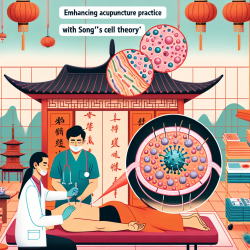Introduction
Acupuncture has long been a cornerstone of Traditional Chinese Medicine (TCM), with its efficacy often attributed to the stimulation of meridians and acupoints. Despite its widespread use, the underlying mechanisms of acupuncture have remained a subject of scientific inquiry. One of the most compelling theories in this field is Song's Mast Cell Theory of Acupuncture, which posits that mast cells play a crucial role in the phenomena associated with acupuncture.
Understanding Song's Mast Cell Theory
First proposed by Professor Jimei Song in 1977, the Mast Cell Theory suggests that mast cells, a type of immune cell found in the skin, are integral to the effects of acupuncture. These cells release various biochemical mediators in response to physical stimuli, such as the insertion of an acupuncture needle. This release can influence nearby nerves and blood vessels, potentially explaining the sensations and therapeutic effects observed during acupuncture.
Clinical Implications for Practitioners
For practitioners, understanding the Mast Cell Theory offers several benefits:
- Enhanced Understanding: The theory provides a biological basis for the sensations and effects observed during acupuncture, such as De Qi, the tingling sensation often reported by patients.
- Improved Techniques: By targeting areas with higher mast cell densities, practitioners can potentially enhance the efficacy of their treatments.
- Evidence-Based Practice: Incorporating scientific theories like Song's into practice can help bridge the gap between traditional techniques and modern medical science, fostering greater acceptance and integration of acupuncture into mainstream healthcare.
Encouraging Further Research
Song's Mast Cell Theory opens numerous avenues for further research. By exploring the interactions between mast cells and other cellular components during acupuncture, researchers can deepen our understanding of its mechanisms. This could lead to the development of more targeted and effective acupuncture techniques, benefiting both practitioners and patients.
Conclusion
Song's Mast Cell Theory of Acupuncture provides a compelling framework for understanding the biological underpinnings of acupuncture. By integrating this theory into clinical practice, practitioners can enhance their skills and contribute to the growing body of evidence supporting acupuncture's efficacy. As we continue to explore the connections between traditional practices and modern science, Song's theory stands as a testament to the enduring relevance of acupuncture in contemporary medicine.
To read the original research paper, please follow this link: Song's Mast Cell Theory of Acupuncture.










